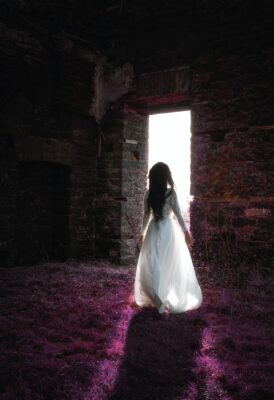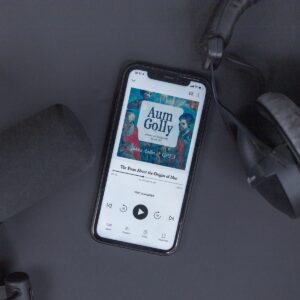
Amazon’s KDP has begun an additional way to publish, called Kindle Vella. It’s a way for writers to possibly capture a new audience: those who read on their phones. Phone readers of my acquaintance lean toward the younger side. I also recognize commuters on trains and busses are using the platform to make their twice-daily trek less boring. Readers can also read Kindle Vella on their tablet, but ironically, not on their Kindle.
KDP was not the first to introduce this type of service.
Radish and Wattpad have been around for quite a while. Amazon now owns them, as well as Kindle Vella. These apps are a way for writers to tell their stories, not in book form, but one “episode” at a time. On Vella, each episode will be 600 to 5,000 words. Writers publishing this way will be in good company.
William Shakespeare published serialized stories in newspapers of his day. The Bard’s readers lined up at newsstands, waiting for the next day’s paper, to keep up with his stories. Nothing new under the sun?
THE BOTTOM LINE
Today, writers using Vella will be paid when a reader unlocks an episode with tokens purchased from Amazon.
A writer will agree to make their first three episodes available to readers for free. Vella will also give each new reader two hundred tokens. When someone chooses to spend their tokens on your story, you receive royalties. Writers in the U.S. have an advantage, as you’re getting in on the ground floor. You only need a Kindle account and a U.S. bank account for payments.
Royalties are currently 50% of what readers spend on tokens they use to unlock your episodes. You earn more or less depending on how many tokens a reader has purchased from Amazon. A bundle of 200 tokens will be more expensive per token than a bundle of 1500. If a reader unlocks one of your episodes with more expensive tokens, you will earn more.
A fun part of writing on Vella is that you can speak directly to your readers. You’ll write an author’s note at the end of each episode, using it as a hook for the next installment. You can also advise of release dates for upcoming episodes if you don’t publish them all at once. You might simply write a note of thanks to your readers.
While you won’t get specific feedback, readers can “fave” an episode. Stories with the most weekly faves will get a crown icon and be showcased in the Kindle Vella Store. Readers can also give a “thumbs up.”
 GENRES
GENRES
Currently, there are fifteen genres featured on Kindle Vella. Except for Non-fiction and Children’s stories, an author can list a primary and secondary option. The two exceptions do not have a secondary category option.
Other genre options are:
Action and Adventure
Dystopian
Erotica
Fantasy
Historical fiction
Humor
Lesbian, Gay, Bisexual and Transgender fiction
Mystery
Paranormal
Romance
Science Fiction
Teen and Young Adult
Thriller
PLATFORMS SIMILAR TO KINDLE VELLA
There are other similar platforms available to writers. Radish and Wattpad were bought out by Amazon before Vella was established. Radish has a smaller following and pays less, but is identical to Vella.
Medium, is primarily for Self-help and How-to works. It is a way to attract clients and perhaps get jobs. Writers are paid when someone reads content.
Onlyfans is a subscription service for those using social media. OnlyFans allows content of any type to be displayed and has become something of a porn hub. Writers here can set their own prices or offer pay-per-view style content.
Patreon, is a monthly subscription service. It extends beyond books to other artistic professionals.
Radish is almost identical to Vella, but they have an application process based on the type of writer you are. They pay less than Vella.
Wattpad is one of the largest online portals connecting readers and writers and reader communities. Readers can make comments and ask the writer questions. Wattpad functions like Vella but is only available through the mobile app. I like the idea of interacting with readers available on Wattpad.
 At least two WAG members have used Vella successfully: Connie Biddle Morrison and Pat Caren, writing as Marie Q. Rodgers. I am planning to join them with my non-fiction, FLORIDA It’s Different Here.
At least two WAG members have used Vella successfully: Connie Biddle Morrison and Pat Caren, writing as Marie Q. Rodgers. I am planning to join them with my non-fiction, FLORIDA It’s Different Here.
There are advantages to using the format. Some writers have eventually removed their work from Vella and released it in traditional book form. This is just a synopsis of a platform available to writers. Check out each of the captioned addresses and read our own Pat Caren’s article in this blog. Be sure to advise the WAG Digest when you do publish—whichever platform you choose.
Just think, you are in good company if you choose to go the serialization route. Charles Dickens, Jules Verne, George Eliot, and William Somerset Maugham all wrote some of their major works in serial form.
[Editor’s note: WAG would love to see articles on any and all topics of interest to writers. Please send your ideas or finished pieces to Cynthia D. Bertelsen at BlogEditor@writersalliance.org for consideration. Remember: these posts are more than just posts, for they are actual articles and can be cited in your CV/résumé in the same way you would a short story, essay, or any other writing credit you may possess.]

Penny Church-Pupke
Thanks, Bonnie, I had no idea there were so many other serialization formats available. Good information.
Bonnie T Ogle
Y W! Yep, there’s always something new! Gotta keep each other up to date!
Jess Elliott
I’m planning on dropping a book on Vella, with chapter one starting on October 1. Will be very curious to see how it goes. A bit scary, as I hope to keep at least five episodes ahead of the drops. Think it’ll be an interesting discipline. Thanks for your article. Wattpad sounds enticing, but I’m already fairly dedicated to Vella… Anyone else tried Wattpad?
Bonnie T Ogle
Good luck, Jess. Keep us posted!